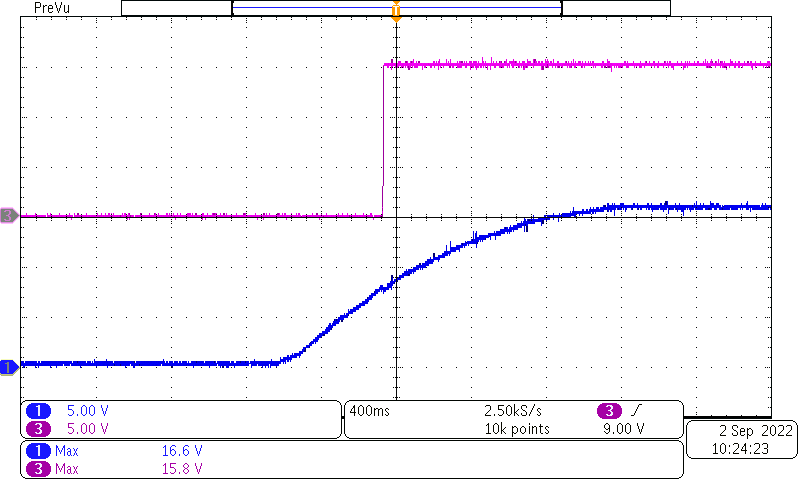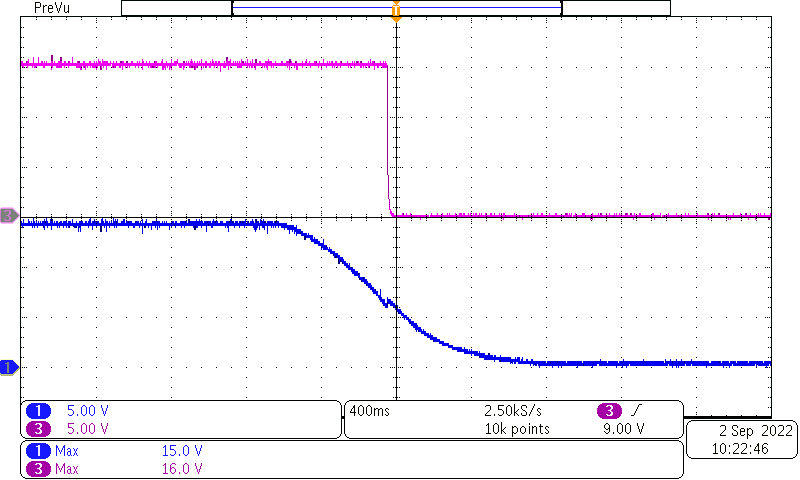TIDT382 February 2024
- 1
- Description
- Features
- Applications
- 1Test Prerequisites
- 2Testing and Results
- 3Waveforms
- 4Summary
- 5References
3.7.1 LM25180-Q1 Undervoltage Protection
LM25180-Q1 undervoltage protection waveforms are shown in the following figures.

Channel 1: Input voltage at start-up
with UVLO protection at full Load, [scale: 5V/div, 400ms/div]
Channel 3: Output voltage at start-up with UVLO protection at full Load, [scale: 5V/div, 400ms/div]
Figure 3-26 LM25180-Q1 UVLO Protection at
Rising Input VoltageChannel 3: Output voltage at start-up with UVLO protection at full Load, [scale: 5V/div, 400ms/div]

Channel 1: Input voltage at shutoff
with UVLO protection at full Load, [scale: 5V/div, 400ms/div]
Channel 3: Output voltage at shutoff with UVLO protection at full Load, [scale: 5V/div, 400ms/div]
Figure 3-27 LM25180-Q1 UVLO Protection at
Falling Input VoltageChannel 3: Output voltage at shutoff with UVLO protection at full Load, [scale: 5V/div, 400ms/div]